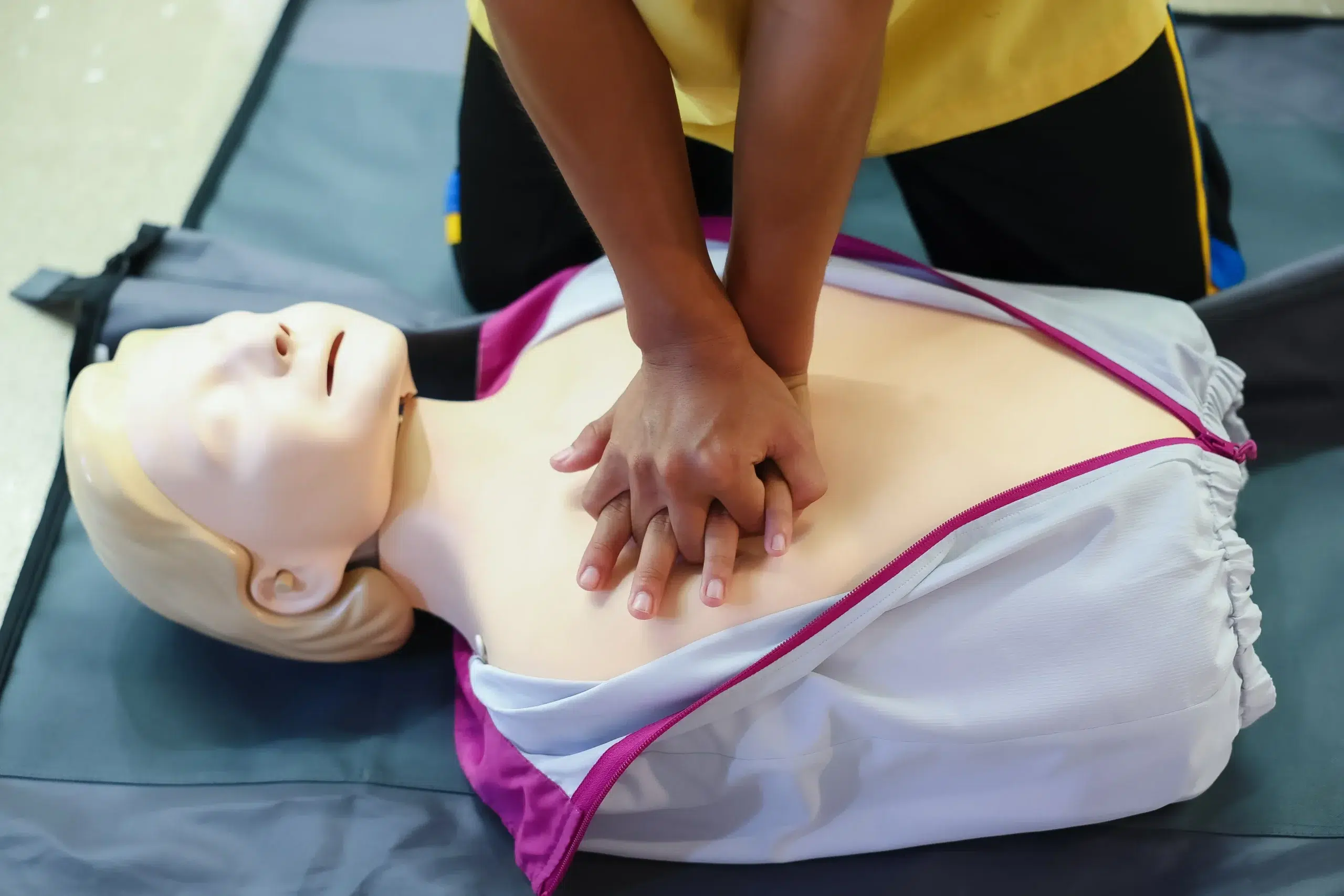Imagine an office where someone suddenly collapses. Panic sets in. Would you know what to do? Workplace CPR and First-Aid Training equips employees with the skills they need to respond to emergencies. It’s not just about compliance; it’s about saving lives.
Understanding the Basics of CPR and First-Aid
CPR (Cardiopulmonary Resuscitation) and first-aid are crucial skills. They enable individuals to provide immediate care during medical emergencies. CPR involves chest compressions and rescue breaths to maintain circulation and breathing in someone who has stopped breathing. First-aid includes basic interventions like wound care or stabilizing a person until emergency services arrive.
These skills are vital. They can bridge the gap between incident and professional medical help. In workplaces, having trained individuals can make a significant difference. Emergencies can happen anytime. Being prepared means being able to act swiftly and effectively.
The Legal Requirements for Training
Many regions mandate workplace CPR and first-aid training. Regulations vary, but the goal remains the same. Ensuring employee safety is paramount. Employers must adhere to local laws. This means providing necessary training and resources.
Understanding these legal obligations is crucial. Non-compliance can result in penalties. More importantly, it leaves employees vulnerable. By meeting legal requirements, businesses protect their workforce and themselves from liabilities.
Enhancing Workplace Safety and Preparedness
Training enhances overall safety. Employees trained in CPR and first-aid contribute to a safer environment. They can identify hazards and respond to emergencies more efficiently. This proactive approach reduces risks and potential injuries.
Workplace safety isn’t just about having a plan. It’s about empowering individuals. When everyone knows what to do, the workplace transforms into a safer space. Employees feel confident and prepared, which boosts morale and productivity.
Boosting Employee Confidence and Morale
CPR and first-aid training builds confidence. Employees learn to handle emergencies. This knowledge extends beyond the workplace. It empowers them to act in their communities and homes.
The impact on morale is significant. When employees feel capable, they’re more engaged. They appreciate their employer’s commitment to their safety and well-being. This fosters a positive work environment and encourages loyalty.
Real-Life Success Stories and Statistics
Statistics reveal the importance of training. According to the American Heart Association, CPR can double or triple survival rates for cardiac arrest victims. Real-life success stories underscore this data. Trained individuals have saved lives by applying skills learned during training sessions.
These stories highlight the value of preparedness. They remind us that emergencies are unpredictable. The difference lies in how prepared we are to respond.
Integrating Training into Company Culture
Making CPR and first-aid training part of company culture is key. It starts with leadership commitment. Leaders must emphasize its importance and allocate resources. Regular training sessions can be scheduled to accommodate all employees.
Integration means more than ticking a box. It’s about creating a culture of safety and awareness. When safety becomes a shared value, it influences behavior. Employees prioritize safety, resulting in fewer incidents and a healthier work environment.
Choosing the Right Training Program
Selecting the right program is crucial. Consider factors like content, certification, and instructor qualifications. Programs should cover essential skills and be tailored to the workplace environment. Certification ensures that skills meet recognized standards.
Quality matters. Investing in a reputable program yields better results. Employees receive comprehensive training, boosting their confidence and competence.
Overcoming Common Challenges
Challenges to training exist. Time constraints, costs, and employee engagement can hinder initiatives. Address these by offering flexible scheduling, leveraging online platforms, and highlighting the personal and professional benefits.
Overcoming challenges requires strategic planning. Employers must prioritize training. By addressing barriers, they ensure that employees receive the training they need.
Maintaining Skills Through Regular Practice
Skills need refreshing. Regular practice reinforces knowledge and builds confidence. Organize refresher courses annually or biannually. Encourage peer-led practice sessions to keep skills sharp.
Ongoing practice is essential. It prevents skill decay and ensures readiness. Employees remain confident, reducing hesitation during emergencies.
Evaluating the Impact of Training
Evaluating impact is key to improvement. Gather feedback through surveys and assessments. Monitor workplace incidents to gauge effectiveness. Use data to refine training programs and address gaps.
Continuous evaluation fosters growth. It ensures that training remains relevant and effective. Feedback loops lead to ongoing improvement and a safer workplace.
The Broader Benefits Beyond the Workplace
Training benefits extend beyond the workplace. Employees carry these skills into their communities. They become assets during public emergencies. Their ability to respond effectively can save lives outside the office.
The broader impact is profound. Trained individuals contribute to safer communities. Their skills enhance public safety and inspire others to seek training.
Resources and Next Steps
To get started, explore American Heart Association training center like Safety Training Seminars. They offer comprehensive training programs. Employers can also collaborate with local emergency services for tailored sessions.
Taking the next step involves action. Employers should assess their needs, choose a suitable program, and schedule training. By investing in CPR and first-aid training, businesses protect their employees and enhance workplace safety.
Conclusion
The importance of workplace CPR and first-aid training cannot be overstated. It’s a critical investment in employee safety and well-being. By equipping employees with these skills, businesses create safer environments and foster a culture of preparedness.
Act now. Explore training options that suit your workplace. Join the movement towards safer workplaces and communities. Together, we can save lives.






